Transport Network Design - PDF
24 Pages5810 Words493 Views
Added on 2020-10-22
Transport Network Design - PDF
Added on 2020-10-22
ShareRelated Documents
Transport NetworkDesign
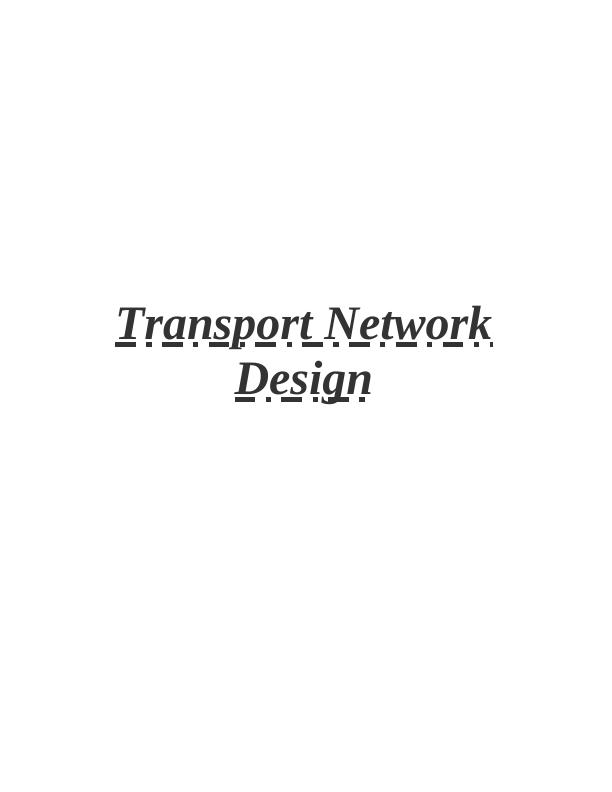
Table of ContentsINTRODUCTION...........................................................................................................................1P1 Analyse network design models as well as features of scalable networks with respect tobusiness needs........................................................................................................................1P2 Discuss bandwidth, load and redundancy issues within LAN and solution with reference tolayer........................................................................................................................................4P3 Selection of LAN devices on the basis of requirements and features by application ofconfiguration commands for network connectivity................................................................4P4 Implementation of LAN design within Layer 2 and Layer 3 redundancy by making use ofrouter and switch redundancy protocols.................................................................................6P5 Scrutiny of WAN technologies and selection of suitable one for a set of enterpriserequirements...........................................................................................................................7P6 Configure WAN protocols within enterprise network solution........................................9P7 Deploy network monitoring tools and troubleshooting methods for establishment ofnetwork baselines.................................................................................................................11P8 Troubleshoot various WAN and LAN connectivity issues within various networkinglayers.....................................................................................................................................11CONCLUSION..............................................................................................................................11Online...............................................................................................................................................1Source: Redundancy: Choosing the Right Option for Net Designs. 2019. [Online]. Availablethrough: <https://www.eetimes.com/document.asp?doc_id=1276954>.........................................1
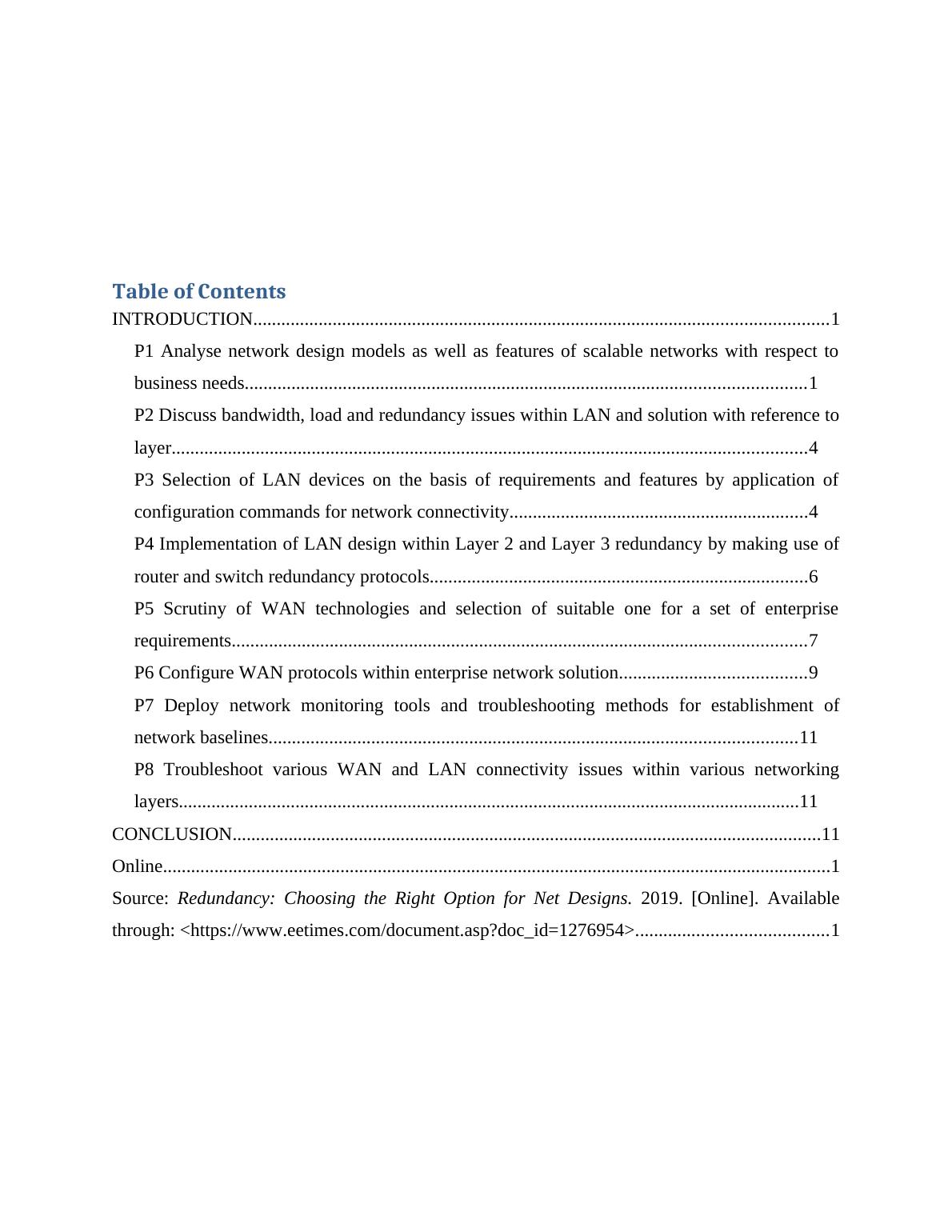

INTRODUCTIONNetwork refers to a system of unified devices which can interact by using similarstandards which are known as protocol. These devices are responsible for carrying outcommunication by exchanging resources such as printers, files, applications and many others.The network in which end-to-end communication occurs is known as transport network(Alshamsi and Diabat, 2015). It furnish logical communication among application processeswhich runs on hosts in a layered architecture. This report is based on The Sage Group Plc, whichis a limited company and a British multinational enterprise software organisation. It isheadquartered in Newcastle upon Tyne, England. It is one of the largest supplier to smallbusinesses. This report deals with network design models along with features of scalablenetworks. Furthermore, bandwidth, LAN redundancy and load issues within layer 2 and layer 3of OSI model are evaluated. Along with this features and requirements of LAN devices areselected and implementation of LAN design has carried out. Apart from this, WAN technologiesare examined and they are configured as enterprise network solution. At last, network monitoringtools are deployed and connectivity issues at different layers are handled.P1 Analyse network design models as well as features of scalable networks with respect tobusiness needs.Planning of building up a computer network infrastructure is referred to network design.The designing process is carried out by network engineers, designers, IT administrators and otherstaff. It is carried out before the process of execution is carried out (Botton and et. al., 2013). Forthis, there are different models, some of them are illustrated below:Cisco three layer or three-tier hierarchical network model: It divides critical flatnetwork multiple and manageable networks. Each level within hierarchy focus on particular setof roles. This model renders The Sage Group Plc. with high degree of flexibility to attainoptimisation and make appropriate selection of feature, software and hardware. This comprisesof access layer, distribution layer and core layer. These layers are specified below:Core layer:It renders optimum transport between high-performance and sites duringrouting. This layer act as a backbone in high speed switch (Bovy and Stern, 2012). This createsrelevant impact on performance as each frame must be recreated as they passes via a each router.1
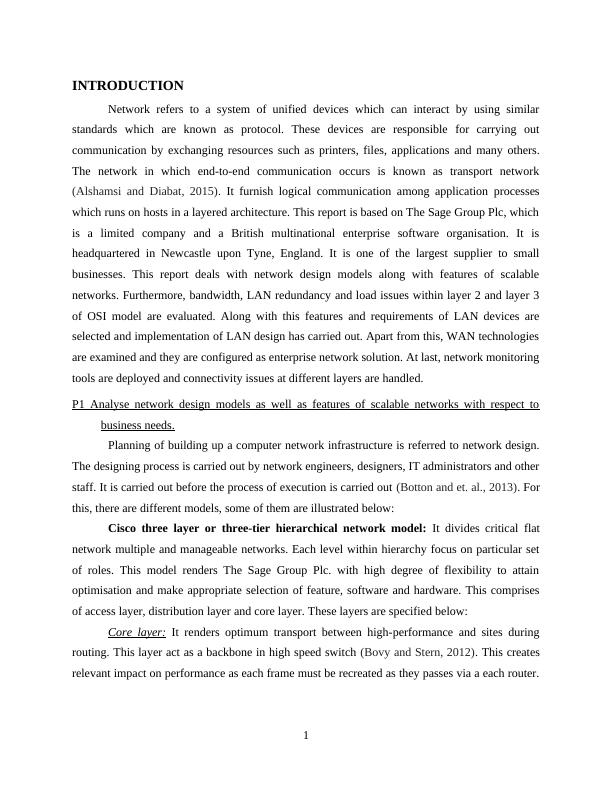
This layer is fastest, biggest and most expensive router which is used to integrate geographicallyseparated network.Distribution layer:This layer is present in between core and access layer. The purposebehind this layer is to furnish boundary definition by execution of accessing lists as well as otherfilters. This layer defines the policies for the transmissions within network which comprises ofhigh end layer 3 switches (De Rosa and et. al, 2013). Access layer:This contains access which which are connected with end devices whichcan be printers, servers or computers. This layer makes sure that packets are effectivelytransferred to end devices (Demuth and et. al, 2014).Two-tier design model: It is appropriate for small to medium sized campus networks inwhich distribution as well as core functions are combined into a single layer. This is referred toas collapsed core-distribution architecture. This model shares various characteristics with partialmesh model, but there are certain additional benefits. This model is used within metropolitansettings in which cost is reduced but still some redundancy exists (Farahani and et. al, 2013). 2
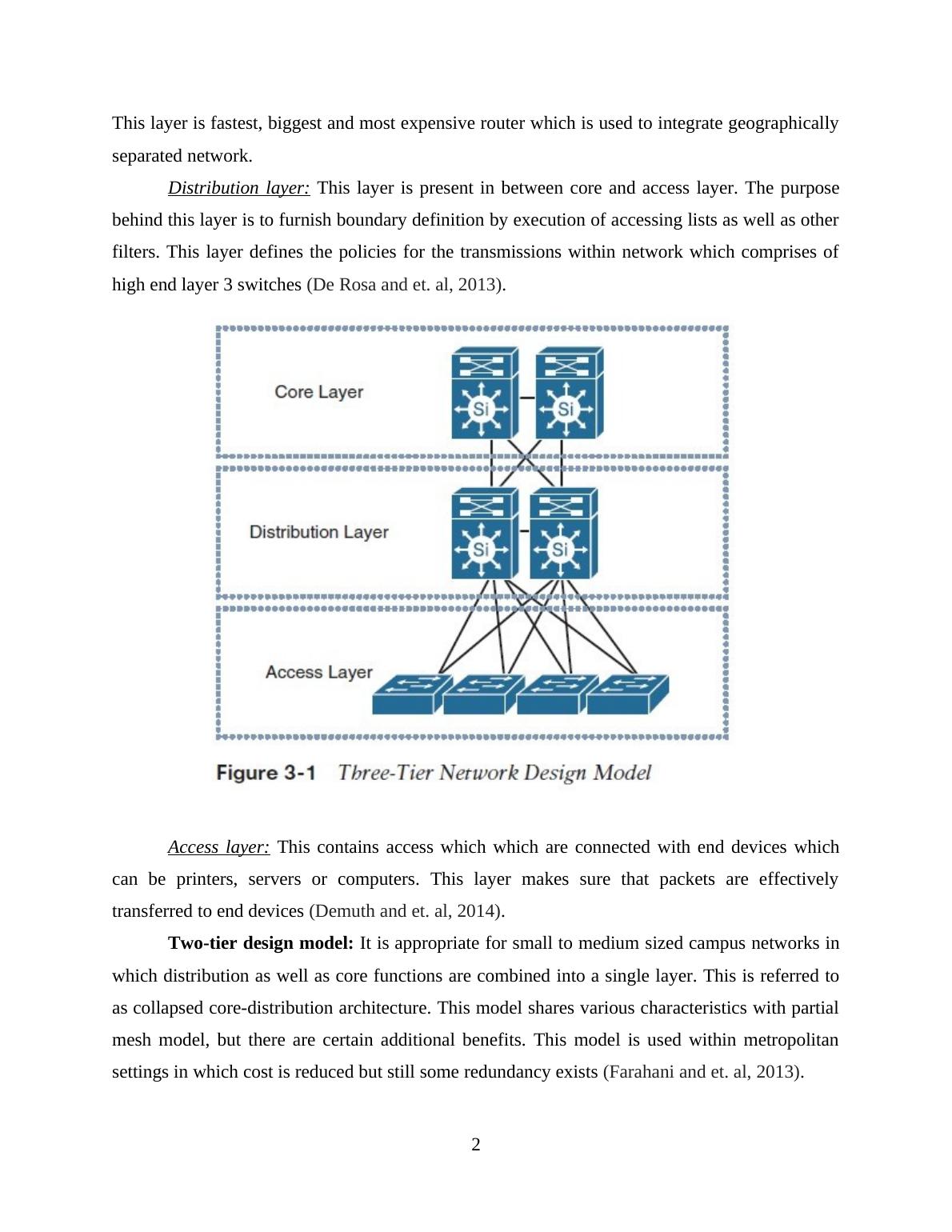
Features of scalable network: Internetwork provides unique features, every scalablenetwork possess essential attributes in common (Govindan, Fattahi and Keyvanshokooh, 2017).They are illustrated below:Reliable and available: This network can be grown up without creating an impact onexisting users. They are suitable for modular devices as they are reliable due to whichthese networks allow expansion. Responsive: A responsive network renders high quality services for different protocolsas well as applications without creating worst response for systems. The internetworkneeds to be capable for responding for issues related with latency which are verycommon in system network architecture (SNA) traffic but still scalable network routesthe packets without creating any kind of impact on QoS.Efficient: Large internetwork needs to use the nominal resources, basically this includesbandwidth. It is affirm able to enhance data without buying WAN services or any kind ofhardware. For this, it is necessary to optimise the redundant broadcasts, routing updatesand service location requests (Keyvanshokooh, Ryan and Kabir, 2016).Adaptable: They include various protocols, hardware technologies and applicationswhich makes it easy for the user.3
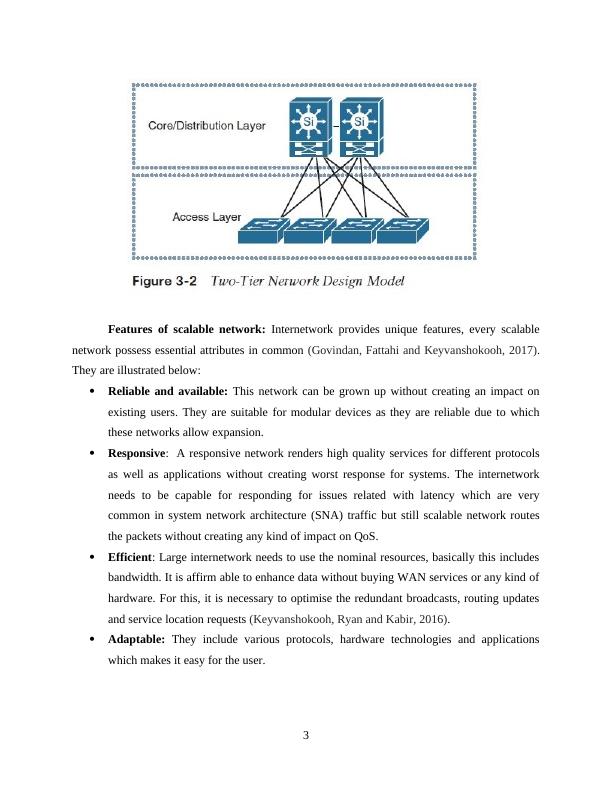
End of preview
Want to access all the pages? Upload your documents or become a member.
Related Documents
Transport Network Design Models PDFlg...
|19
|4785
|328
Information Technology Network Designlg...
|6
|780
|27
The Use and Importance of Network Monitoring Toolslg...
|25
|5245
|53
Network Designinglg...
|4
|947
|64
NETWORK DESIGNING AND TROUBLESHOOTlg...
|24
|3869
|12
MIS102 Data And Networking Assignmentlg...
|7
|1719
|49
